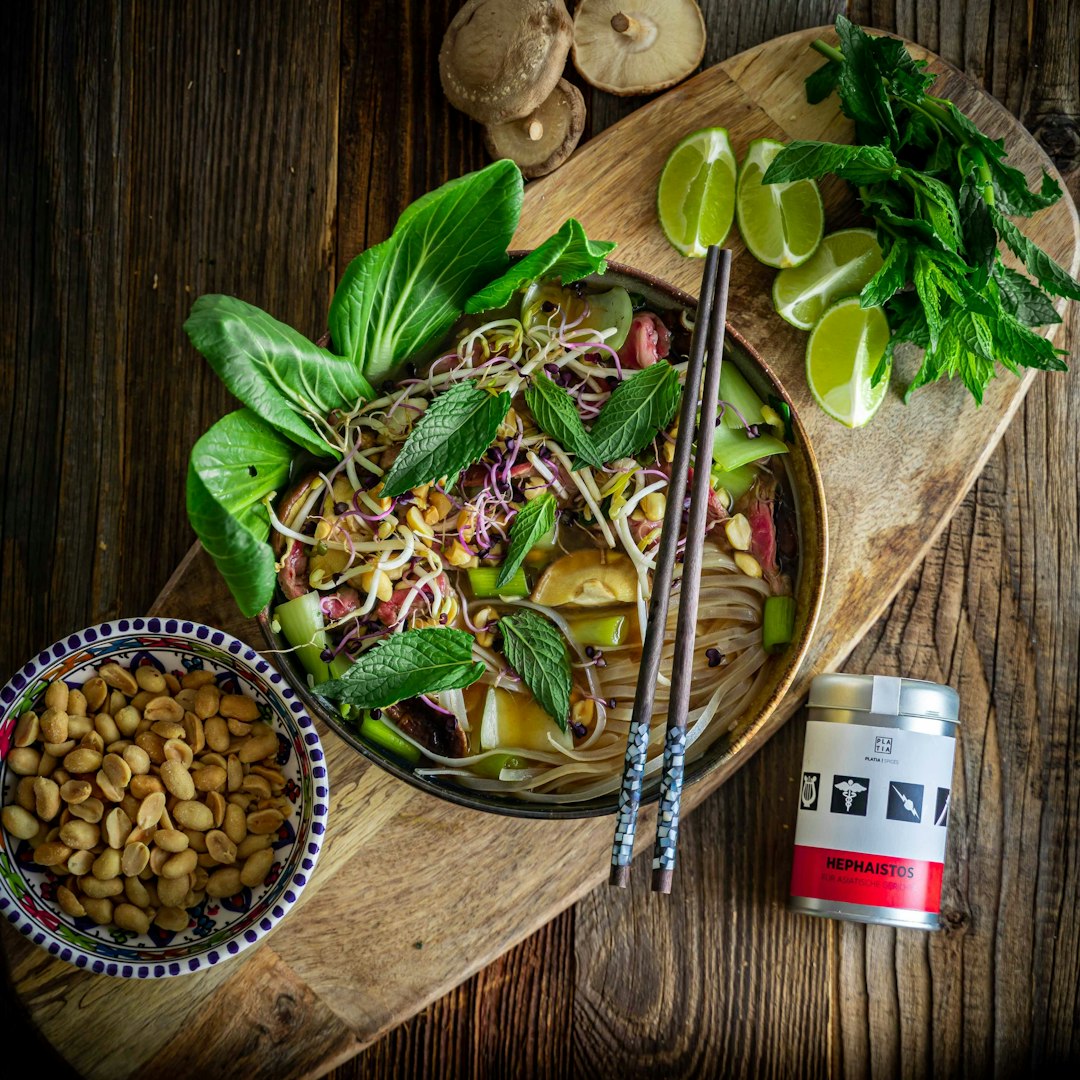Phở
The humble origins of Phở (pronounced ‘fuh’) are closely tied to Hanoi, the bustling capital city of Vietnam. Originating in the early 1900s, it has been said that the first bowls of Phở were served mainly to Chinese labourers in the area. The dish soon became popular among the people of Vietnam and has since spread across the world.
The aromatic broth of Phở typically contains beef or chicken, but can absolutely include both. It's artfully infused with varying ingredients such as star anise, cinnamon, ginger, garlic, clove, cardamom, black pepper, onion and fennel, creating a fragrant and flavorful base. This is then combined with daikon radish and crisp vegetables, along with rice noodles, and topped off with your choice of beef, beef balls, chicken, pork, shrimp and/or tofu.
The beauty of Phở is that it can be modified to your preferences; want a heartier meal? Add more noodles. Want something light? Reduce the broth and add more vegetables. The flavor can also be amped up with a variety of condiments such as fiery chili flakes, hoisin sauce, sriracha and fish sauce.
Although there is debate as to the ‘authentic’ way of preparing and serving Phở, the beauty of this dish lies in its simplicity, allowing for immense creativity and customization. Its depth of flavor and versatility makes it the perfect culinary canvas - and its taste will delightful the most discerning of palates. Undeniably, Phở has earned its place as a food icon of not just Vietnam, but many countries across the globe.
Phở recipes
Amazing Phở recipes sourced from the web.
The origin of Phở
When it comes to the origin of Phở, the conversation may often revolve around whether it’s Chinese or Vietnamese in its conception. In actuality, the beloved dish has influences from both nations—which makes sense considering the geographical positioning of Vietnam, whose history includes a significant amount of Chinese influence.
In fact, scholars have deemed the combination of cultures as a crucial factor when trying to unearth the history of Phở. To many, the experience of eating Phở reaches far beyond the taste bud, as it is a manifestation of the blend between China and Vietnam.
Historical accounts cite the late 19th century as the emergence of Phở, when Vietnamese traders returned from their travels in the Chinese province of Guangdong. During their journey, the traders would often find themselves exposed to a dish called “meat-rice noodle soup”, which they would attempt to recreate upon returning home.
In spite of its popularity today, Phở was initially limited to street vendors in Vietnam. The enticement of the piquant and savory aroma, distant amongst the bustling markets, would soon captivate all who passed.
It wasn’t until the 1950s that Phở started to gain notoriety, when soldiers of the French army expressed their fascination with the deliciousness of this novel soup. Eventually, the dish reached the heights of fame it enjoys today due to its widespread recognition by the international community; a recognition that can be attributed to the perfect marriage of Chinese and Vietnamese cuisine.
After more than a century of development, Phở certainly holds its place as an icon of Vietnamese cuisine. From its humble beginnings on the busy streets of Vietnam, it has since transcended into a global phenomenon, a beloved dish that continues to amaze.
Types of Phở
When you think of Vietnamese cuisine, the first thing that usually comes to mind is Phở. Phở is a versatile dish that has a range of different types and variations depending on where it is prepared. This staple food can be found in almost every corner of Vietnam and is seen as a national treasure.
It is believed that the origins of Phở connects back to the beginning of the 20th century when French colonists brought with them their own version of the soup. It was then adapted by the Vietnamese people, who added unique ingredients to create their own distinct recipe.
Today, there are numerous types of Phở that vary depending on type of broth used and the other ingredients added to the dish. The most common type of Phở is the traditional beef Phở. This dish consists of a clear beef broth, thin strips of beef, rice noodles, herbs and often a few other condiments depending on the cook’s preference.
Another popular type of Phở is the chicken Phở. This dish is made with a chicken broth and usually contains chicken, herbs, and noodles. It is also served with a variety of different condiments and spices that can be added at the diner’s discretion.
In addition to these two common types, there are several more variations of Phở that are enjoyed throughout the country. Seafood Phở uses a combination of seafood and vegetables, while vegetarian Phở is a vegan-friendly option made with a variety of vegetables. There is also Phở Sate, which includes an extra spicy sate sauce and a variety of other spicy seasonings.
No matter what variation of Phở you enjoy, it is sure to provide a delicious and satisfying meal. Each version of Phở features its own unique flavors and textures, making it one of the most beloved dishes in Vietnam.



